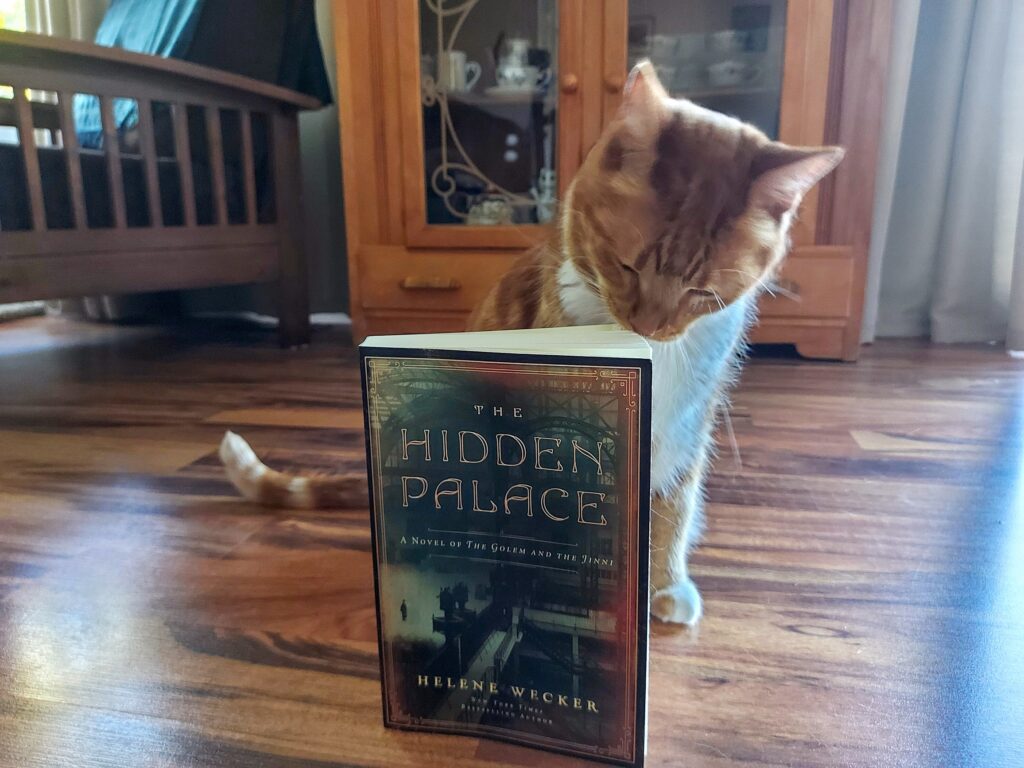The Hidden Palace by Helene Wecker

The Hidden Palace is the sequel to The Golem and the Jinni (which I reviewed back in February). The Hidden Palace is even more intricately plotted than its predecessor and is as incredibly immersive. It is no wonder that it took Helene Wecker seven years to write this novel. The plot spans decades and touches on major historical events such as the Triangle Shirtwaist Factory fire, the sinking of the Titanic and World War I. I found the tone of the novel to be on the pessimistic side, so I do not love it quite as much as The Golem and the Jinni, but it is definitely still worth reading.
DO NOT READ ANY FURTHER IF YOU HAVE NOT READ THE GOLEM AND THE JINNI YET.
The Hidden Palace picks up immediately after where The Golem and the Jinni left off. Chava and Ahmad have become “clandestine lovers”, but their relationship is constantly full of strife, which is not surprising considering their natures, but still disappointing to read. Chava, as a golem, constantly feels the need to help people. Ahmad, fiery and selfish, does not want Chava running into burning buildings to save people; he wants her to think of herself, and him, first. But she understandably has a hard time doing that because she literally feels what everyone else is feeling. Chava and Ahmad unfortunately end up spending most of the novel doing their own thing.
Sophia Winston, Ahmad’s human lover, is upgraded from a supporting character to a main character in this novel. The Hidden Palace follows her decades long journey through Europe and the Middle East looking for a cure for the chill that has plagued her since having sex with Ahmad. I very much appreciated Sophia’s growth as a character throughout the novel as she moves away from being a spoiled heiress to an independent woman that can take care of herself. Her story is perhaps the most interesting, but she eventually crosses paths with a new character, a jinniyeh (female jinni) called Dima. Dima is an unpleasant character that I do not care much for, and that has hardly any redemptive qualities.
Other new characters introduced in The Hidden Place and that play big roles in the events of the novel are a young Jewish girl named Kreindel and another golem that Kreindel helps her father create, which they name Yossele. Kreindel is another unpleasant character, but she is more sympathetic than Dima. Her mother died when she was a baby, but her father, an ultra strict rabbi, does not bother to raise her and pretty much leaves her to her own devices, until they start working on the golem together. Her father is killed in a tenement fire when she is eleven and she ends up in an orphanage for Jewish children. Yossele becomes the only “family” she has left. I think the most sympathetic character in the novel must be Yossele. He was built to be a weapon against the Russian pogroms of the early 20th century, so he cannot resist his brutish, destructive nature like Chava can, but he also shows sign of independent thought and understanding and could perhaps be taught how to express the gentler side of human nature if he did not have such an angry, lonely child for a master.
Humanity is once again reflected through Chava and Ahmad (as well as Dima and Yossele) in The Hidden Palace, but this time they know how human they have become. The question is, do they want to continue to be part of the human world?
I am not sure if Wecker could continue Chava and Ahmad’s story considering how this novel ends, but I would certainly welcome another novel about them.